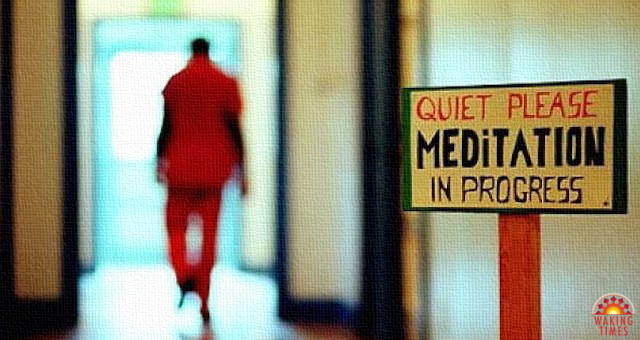
The Manhattan County District Attorney’s Office in New York City has just announced that they are introducing meditation to their correctional institution as a coping mechanism for inmates suffering from stress. Joan Volley, a DA spokeswoman, said, “Our office is exploring ways in which it may be used to assist incarcerated individuals, domestic violence and human trafficking survivors, trauma-service providers and other people who may benefit from this unique therapeutic tool”.
They will be using a specific method of meditation called Transcendental Meditation (TM), which was introduced in the 1960’s by Maharishi Mahesh Yogi. This particular method has been claimed by many famous and successful people to be an incredibly powerful tool which encourages personal transformation. Director and producer David Lynch has shown his support for the meditation method to be used in institutions and has even been involved in TM being introduced to students, by recommending it to California’s public education system. OSCI’s Medical Director, Dr. Michael Puerini, said, “I think that TM can really help people broaden their focus. There’s something about TM that brings out compassion. I don’t know how it works, but it does. And a compassionate person is a healthier person”.

The David Lynch Foundation brought Transcendental Meditation to 900 inmates in the Oregon State Correctional Institution back in 2015, as part of a personal development program. This program was designed to help prisoners to integrate back into society following their time that they had served. Reported results following the program were impressive, with reports claiming that the participants felt that they had an improved quality of life following the practice of TM, as well as improved focus and an overall feeling of peace. All of these factors then led to less stress in their later lives and an increased sense of peace following a tough experience and a normally difficult environment that they were integrating back into.
Ladarrius Tidmore, a 21-year-old prisoner who often practices TM, said, “When I meditate it’s like a free feeling, it takes me away from the prison completely, I zone everybody out, everything out, like I’m not even here for those 20-30 minutes that I meditate. The bad part about it is when I come back to reality I’m still here, but when I do meditate I’m relaxed, free, I’m back on the streets, out of it, nothing can touch me. It’s a great feeling.”
Meditation has been proven to have a huge range of benefits, including positive effects on the brain and overall physiology. It is a practice that is continually expanding to a broad range of people, whilst solving personal problems and tackling social issues. Robert W. Coleman Elementary, in West Baltimore, MD, conducted an experiment using mindful meditation in the place of detention and obtained very positive results. Over time, the school saw a dramatic reduction in the need for suspensions and detentions. Due to impressive results such as these, researchers are currently looking to meditation as an alternative to prescription pharmaceuticals as a treatment for childhood ADHD. So far, they have found that the sustained practice of meditation can take the place of ADHD medication pills for children. Linda Handy, Ph.D. said, “It’s working, it’s improving their lives, it’s improving their sense of self, it’s empowering them… I really do see it making a big difference, and I think their futures are going to be so much brighter because of it.”
The following video from the David Lynch Foundation demonstrates the benefits of meditation in US correctional institutions, and the tremendous benefits of humans reconnecting with their spiritual selves.
What are your thoughts? Please comment below and share this news!
This article (Meditation Is Introduced Into Prisons To Give Inmates A Better Quality Of Life) is free and open source. You have permission to republish this article under a Creative Commons license with attribution to the author and TrueActivist.com


